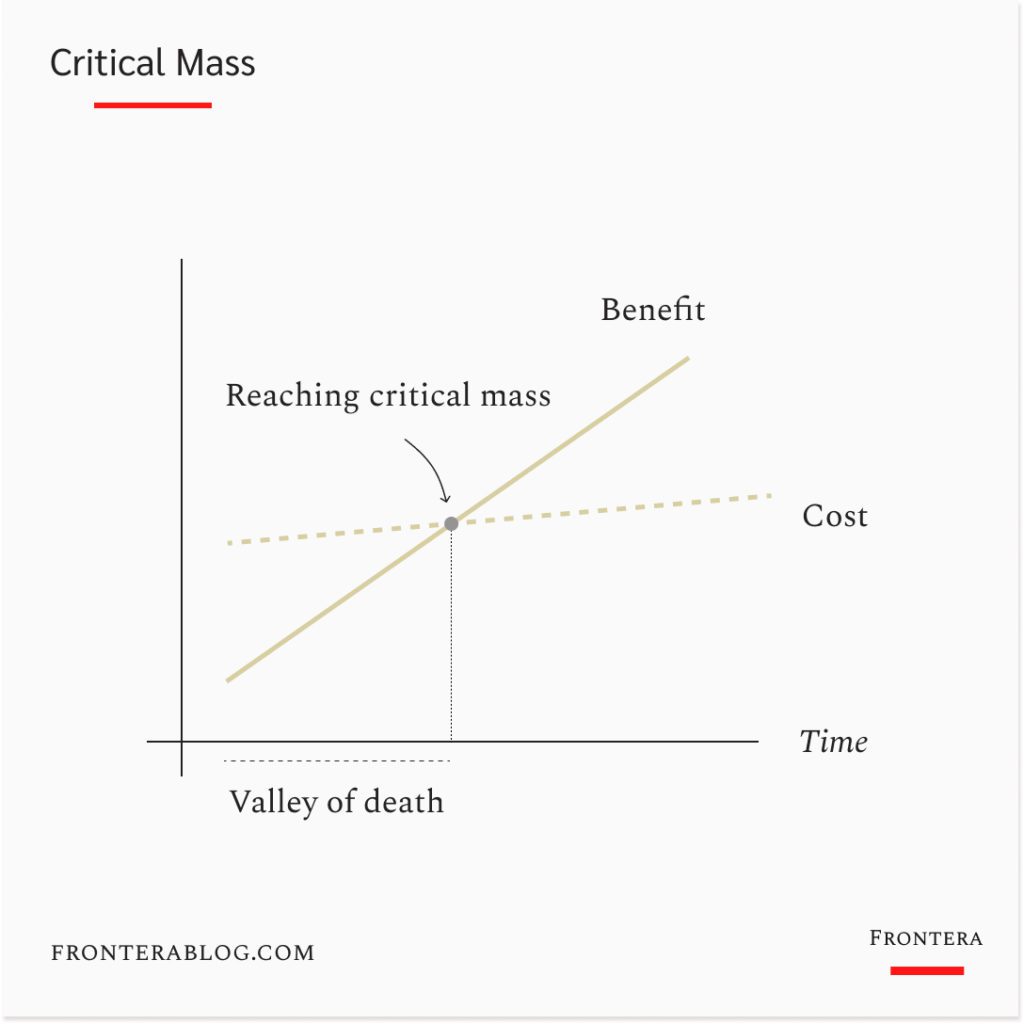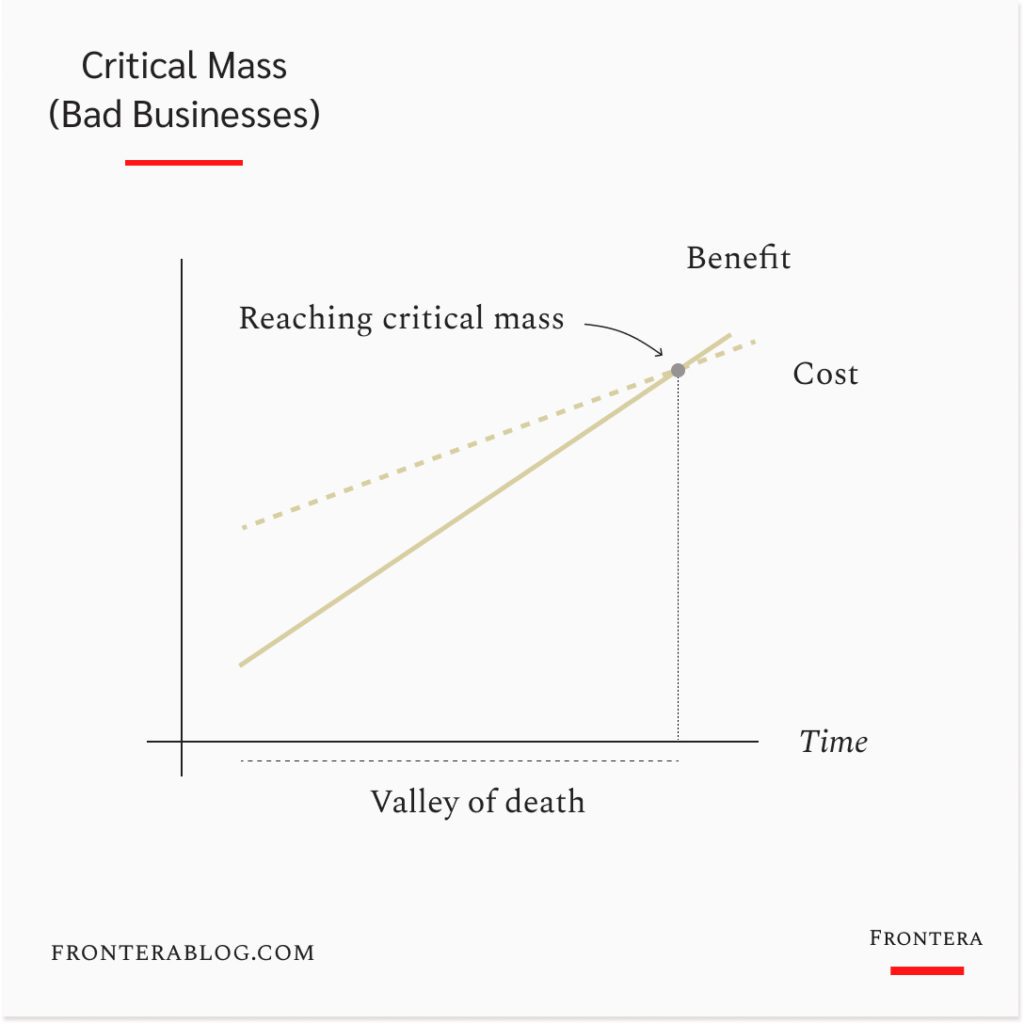Everything is hard at the beginning.
Started a business?
Good luck finding your first 50 customers.
New social media account?
Getting your first 10,000 followers takes forever.
People put in the effort (and money) for months, but don’t get any visible return back. It’s frustrating.
So most people quit at this stage.
Crossing the valley of death
But if you manage to survive this “valley of death”, everything changes.
The effort starts paying off.
And the next 50 customers or 10,000 followers come faster.
So your work starts to sustain itself on its own.
It’s the success moment.
Venture capitalists call it reaching critical mass. Meaning from that point on, the startup can survive without more investment.
Here’s how it looks:

And critical mass doesn’t only apply to business or social media.
The same pattern exists everywhere:
- Ideas: Once an idea reaches critical mass, it spreads much faster. Democracy and women’s rights are good examples from history. At first, early believers struggle to convince others. But when they reach a critical mass of the population, the idea becomes unstoppable.
- Technology: A new technology’s success depends on early adopters’ ability to convince a critical mass. If they manage to do that, the majority adopts the technology.
- Trends: Food, fashion, or movies. Trends become “trends” only if they reach critical mass.
I know what you’re thinking.
Alright, critical mass is important; but how can you use it to your benefit?
Three Takeaways From Critical Mass In Business:
1. Choose the right game
You’ve probably heard the joke about airlines:
“If you want to become a millionaire: become a billionaire first, then start an airline.”
But why is the airline business bad?
One reason is that it’s so hard to reach critical mass.
To increase the return, you have to increase the cost at a higher rate than other businesses.
Because your success (selling more tickets) breeds more costs (leasing, more staff) instead of making your life easier.
The same applies to restaurants.
Your benefit has an upside cap (the number of seats) which you can only increase with more cost.
The valley of death is much larger for these businesses:

So choose an easy game from the beginning.
Can you increase the returns while keeping the costs relatively low?
If the answer is yes, you’re playing the right game.
2. Look for success clues
On your journey to reach critical mass, you feel doubt.
Every day, you ask yourself:
“Should I persist on this or move on to something else?”
And it’s a valid question.
To find an answer, look for success clues.
Kevin Systrom founded Burbn as a location-based photo-sharing platform (like Foursquare).
It didn’t gain traction as he expected.
But he realized one thing: users used the picture filters more than the other features.
So he created a new app focusing only on photo-sharing with filters.
And he released it with a new name: Instagram.
The rest is history.
So look always for success clues in what you do.
And focus your energy on what works.
If there are no success clues at all, it’s better to move on.
3. Pay attention to timing
YouTube was not the first video-sharing platform.
Many companies tried the same idea, even before 2000.
But they didn’t reach Youtube’s success despite being the first.
Why?
Because the internet (and video technology) had not reached its critical mass yet.
Few people had internet access, it was slow, and nobody had cameras in their pockets.
So even though those companies spotted the right trend and acted on it, they were too early to reap the benefits.
When you plan to act on a trend, always consider the timing.
It’s better to jump on a train a bit later; after you’re sure that it will take you to your destination.
–
Enjoyed this article?
Then you’ll love the How Brands Win Newsletter.
Get the “5 Mental Models to Differentiate Your Business” guide when you join. It’s free.
